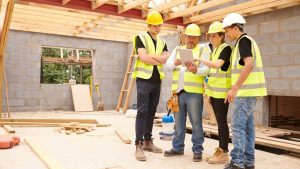The issue today is not energy conservation in building design and construction, but how to ensure that the interior environment created is not one that is unhealthy and will lead to illnesses, said a conference speaker attending the 2013 ASHRAE conference held in Vancouver, B.C.
In Europe, the focus is shifting onto how to measure and maintain interior air quality (IAQ) as new energy conservation standards are implemented, said civil engineer Pawel Wargocki.
He works for the International Centre for Indoor Environment and Energy at the Technical University of Denmark. Wargocki’s presentation focused on what lessons North America could learn from the European experience.
“Low energy is really a low-hanging fruit,” he said, when building design for people is considered.
Countries around the world – including those in Europe – are formulating and implementing standards and objectives for building energy conservation. There is a lot of research on energy-efficient buildings, he said.
“We perhaps do not effectively capitalize on the research,” he said adding there should be enough there to point towards what new challenges these buildings present.
“There needs to be legislation,” said Wargocki.
“This is the first lesson that we have learned from Europe.”
That has been an important factor in moving building design towards energy conservation.
The Energy Performance of Buildings Directive (EPBD) adopted by the European Commission in 2002, and implemented by 2006, attempts to get member countries compliant in greenhouse gas emissions and energy conservation.
Its standards were recast in 2010 with the objective that by the end of December 2020, new buildings in the EU will produce as much energy as they consume.
“All these actions, though, should not impact environmental air quality inside buildings,” he said.
One of the leading issues that European countries are now facing is trying to assess the emissions from consumer products.
Otherwise, when air quality in the interior of buildings is considered, it is made up of both those emissions created by individuals within the structure and also emissions by the products that are placed in the structure, including construction materials and furnishings.
In Europe, he said, numerous studies looking at IAQ have emerged.
The Healthy Air in Dwelling in Europe (THADE) study is an overview of evidence-based data about indoor exposure to pollutants causing allergies, asthma and other respiratory diseases, a review of cost-effective measures and technologies that can impact air quality, legislation and the need for an integrated European strategy for IAQ.
What has emerged is an effort to move towards harmonizing labeling amongst various European countries using or producing products that have emissions and determine how those chemical emissions impact on the inhabitant’s health in buildings, he said.
In September 2013, a report entitled Emissions, Exposure Patterns and Health Effects of Consumer Products in the EU was released.
Amongst the report’s findings was a need for closer harmonization between IAQ and energy conservation.
It also advocated for VOC emission limits for buildings and clearer labeling on products regarding their emissions when used in construction or in buildings.
It has also led to the need to control exposure to indoor air, he said.
The recently initiated HealthVent Project attempts to provide the framework for health-based ventilation in buildings as it found there was a greater health risk today from exposure to pollutants inside buildings, than from outside.
Wargocki has authored a paper on how low-emission building materials can reduce ventilation needs.
As Europe moves towards more “low-energy buildings” there’s also the need for those who live and work in buildings to change their role within the structure, he said.
Building residents have been passive and relying on mechanical adaptation to control their environment.
Yet, the new low-energy buildings will require individuals to become more participatory if they want to ensure a healthier internal environment.
They will play a role in adjusting their environment to maintain IAQ.
It may be as simple as a carbon-dioxide monitor that redlines and indicates it is time to open a window.
“It is asking people to do something about their environment,” he said.
Other internal mechanisms could be deployed in schools to alert children and serve as a learning tool in creating healthy IAQ.
The bottom line on energy conservation, he said, was people.
The construction has to be aligned with health considerations to be effective, Wargocki said.
“Buildings are for people – not to save energy,” he said.
Wargocki was speaking at ASHRAE’s IAQ 2013: Environmental Health in Low Energy Buildings conference in Vancouver, B.C.










Recent Comments
comments for this post are closed